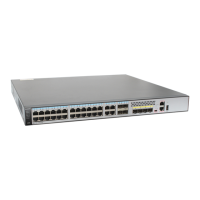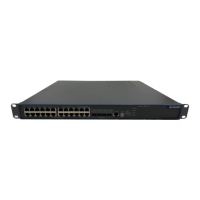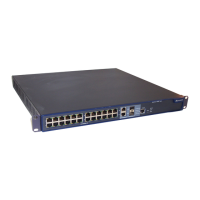l The ext-vb parameter sets extended bound variables for traps sent to the target host. By
default, the traps sent to the target host do not carry extended bound variables.
Step 7 (Optional) Run:
snmp-agent sys-info { contact contact | location location }
The equipment administrator's contact information or location is configured.
This step is needed if the NM station administrator needs to know equipment administrators'
contact information and locations when the NM station manages many devices. This will allow
the NM station administrator to quickly contact the equipment administrators for fault location
and rectification.
To configure both the equipment administrator's contact information and location, you need to
run the command twice to configure them separately.
Step 8 (Optional) Run:
snmp-agent packet max-size byte-count
The maximum size of an SNMP packet that the device can receive or send is set.
By default, the maximum size of an SNMP packet that the device can receive or send is 12000
bytes.
After the maximum size is set, the device will discard any SNMP packet that is larger than the
set size. The allowable maximum size of an SNMP packet for a device depends on the size of a
packet that the NM station can process; otherwise, the NM station cannot process the SNMP
packets sent from the device.
----End
Follow-up Procedure
After the configurations are complete, basic communication can be conducted between the NM
station and managed device.
l Access control allows any NM station in the configured SNMPv3 user group to monitor
and manage all the objects on the managed device.
l The managed device sends alarms generated by the modules that are open by default to the
NM station.
If finer device management is required, follow directions below to configure the managed
device:
l To allow a specified NM station in an SNMPv3 user group to manage specified objects of
the device, follow the procedure described in Controlling the NM Station's Access to the
Device.
l To allow a specified module on the managed device to report alarms to the NM station,
follow the procedure described in Configuring the Trap Function.
l If the NM station and managed device are both Huawei products, follow the procedure
described in Enabling the SNMP Extended Error Code Function to allow the device to
send more types of error codes. This allows more specific error identification and facilitates
your fault location and rectification.
l If the functions such as accounting and fault location need to be bound to specified
interfaces to prevent changes in interface indexes during device or interface restart, follow
the procedure described in Configuring the Constant Interface Index Feature.
Quidway S5700 Series Ethernet Switches
Configuration Guide - Network Management 1 SNMP Configuration
Issue 01 (2011-10-26) Huawei Proprietary and Confidential
Copyright © Huawei Technologies Co., Ltd.
29

